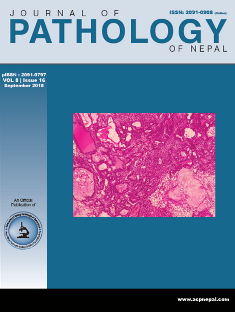Early detection of cancer in Nepal: Role of liquid biopsy
DOI:
https://doi.org/10.3126/jpn.v8i2.20893Keywords:
Cancer, Liquid biopsy, Detection, Nepal, Circulating Tumor DNA, ScreeningAbstract
Cancers of the uterine cervix, breast, lung and stomach are four of the most common cancers in Nepal. Lack of knowledge and awareness about cancer, its risk factors and negligence of the early warning signs play crucial role in raising the incidence of the cancer. Curative therapies are most successful when cancer is diagnosed and treated at an early stage.
Organized cancer screening programmes provide screening to target population and use multidisciplinary delivery teams, coordinated clinical oversight committees, and regular review by a multidisciplinary evaluation board. For population-based screening programs, decision- making and governance structures, tasks and procedures need to be defined.
In this paper, we review population-based cancer screening programmes of different countries and share recommendations and relevant evidence for screening and early detection of common cancers in Nepal. The evidence-based recommendations provided in this Review are intended to act as a guide for policy makers, clinicians, and public health practitioners who are developing and implementing strategies in cancer control. We also discuss the role of liquid biopsy in early detection, diagnosis and monitoring of cancers using circulating biomarkers. Despite challenges, time has come to include cell free circulating tumor DNA (ctDNA) and circulating tumor cells (CTCs), as a parameters for early detection of cancer in the days to come.
Downloads
Downloads
Published
How to Cite
Issue
Section
License
This license enables reusers to distribute, remix, adapt, and build upon the material in any medium or format, so long as attribution is given to the creator. The license allows for commercial use.




